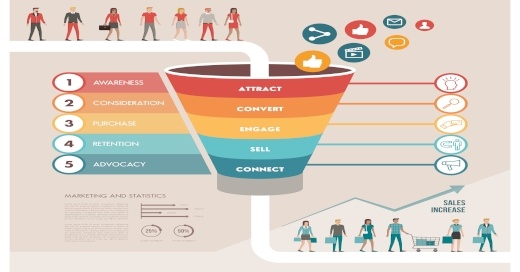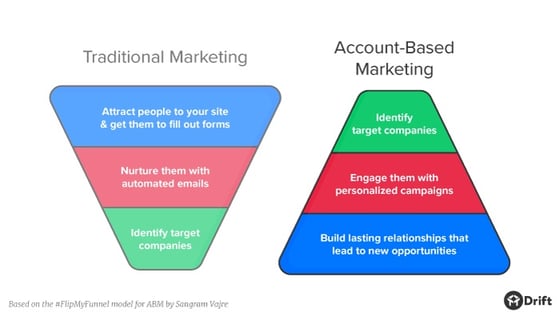Demand Generation vs. Inbound Marketing: Function vs. Method

There seems to be a lot of confusion around the terms "demand generation" and "inbound marketing". What's the difference between them? Aren't they basically the same thing? We hear these types of questions a lot working in our industry, and if you are someone that has pondered these thoughts yourself, we can't say we blame you. While the two concepts may appear similar at first glance, don't be fooled by them. They are two very different ideas with two very different meanings. Let's dive a little deeper into each topic to provide some more clarity on how and why demand generation and inbound marketing are so different.
Demand Generation: The Function
The first thing to note in the difference between demand generation and inbound marketing is that demand generation is a function. Specifically, it is the function of generating leads. Demand generation focuses on finding ways to make people feel as though they need your product for one reason or another. Typically, when marketers think of demand generation, we think of it in terms of the various stages of the marketing funnel (visits, leads, MQLs, SQLs, opportunities). Marketers who take a demand generation approach to marketing aim to discover the most successful way they can nurture leads through the funnel until those leads eventually become closed-won customers. The thing about demand generation though, is that it can be executed in a number of ways. This is where inbound marketing comes into play.
Inbound Marketing: The Method
Inbound marketing is a method or approach that can be taken when executing a demand generation strategy. Unlike traditional outbound methods of marketing, where salespeople reach out to prospects, the inbound method focuses on providing relevant, educational content to prospects to nurture them through the stages of their buyer's journey: awareness, consideration and decision.
During the awareness stage of the buyer's journey, our goal as marketers is to make people aware that they have a problem. Once our prospects are aware of a problem and come to the realization they need to fix it, they move into the consideration stage. In this stage, our prospects are actively searching for ways to solve their problem and our job is to provide them with possible solutions. Once all of the solutions have been laid out for the prospect, it's time to make a decision. This is where we marketers help our prospect decide what is the best solution for their specific business. How do we accomplish these goals and guide our prospects to their solution? Inbound focuses heavily on providing value before extracting it. Value could be in the form of revenue, efficiency, productivity or the alleviation of any pain point a specific prospect faces. Inbound is all about focusing your efforts on creating the right content, for the right person and providing it at the right time.
Other Methods of Demand Generation
While our company advocates leveraging an inbound approach to your demand generation strategy, there are other methods we feel are important to mention when thinking about generating demand. The first is outbound marketing. The central idea of outbound marketing is for salespeople to initiate conversation with leads. Outbound has a less targeted or strategic approach than inbound marketing. It is more about pushing your message out to as many people as possible and hoping it resonates with them rather than focusing on the type of customers that would be a good fit for your company, or, as we call them in inbound marketing, buyer personas. Outbound marketing could include a variety of marketing tactics such as trade shows, email blasts or cold calling. Imagine having your business development representatives (BDRs) smiling and dialing with their list of 1,000 contacts and hoping that if you cast your net wide enough, maybe you'll catch a couple of fish. This spray and pray approach may seem a little random, but can work for some companies.
Another method of demand generation is account based marketing (ABM). The ABM approach to demand generation flips a traditional marketing approach on its head. With traditional marketing, the goal is to attract people to your website, nurture them with automated emails and then identify target companies. When leveraging an ABM approach, the first initiative is to identify target companies, then engage them with personalized campaigns, and finally create lasting relationships with them.
You might be thinking, "This approach sounds fairly similar to inbound marketing!" The difference between ABM and inbound marketing is that ABM targets leads that are a high fit but may not have expressed interest yet. Inbound marketing is more focused on identifying if the leads who have expressed interest are a high fit. Because ABM is a hyper-focused approach, it usually works better for companies who have a smaller market for their product. A company just getting started in a small area would likely benefit from taking an ABM approach to marketing.

As you can see, demand generation can be approached in a variety of ways, and inbound marketing is just one of the many. But to be clear, the approach you take to demand generation is going to depend on a number of things, including: your product, your business model, your target market and your marketing budget. Each method will work differently for different companies depending on their resources. You are not limited to just using one of these approaches. A lot of times, these approaches to demand generation work best when the strategies are layered with one another.
Key Takeaway
To sum things up, demand generation and inbound marketing are two very different concepts. Demand generation is a function and inbound marketing is a method of demand generation. And while we are pretty big fans of leveraging inbound marketing in our demand-generating activities, there are other ways that you can generate demand for your company. Choosing the right demand generation strategy for your company is dependent on your company's individual marketing goals. For a lot of companies, success may require a combination of methods.
Marketers can probably agree that inbound marketing is the way we would want customer acquisition to happen. Gaining organic traction is a far more natural way to attract leads, but it can be a more time-consuming process. For instance, when you create that first piece of blog content, it takes time to gain traction. But don't let that discourage you from taking an inbound approach to demand generation. Once that traction is gained, you'll be on your way to increasing revenue and gaining rapid growth for your company.
Guido Bartolacci
Guido is Head of Product and Growth Strategy for New Breed. He specializes in running in-depth demand generation programs internally while assisting account managers in running them for our clients.





